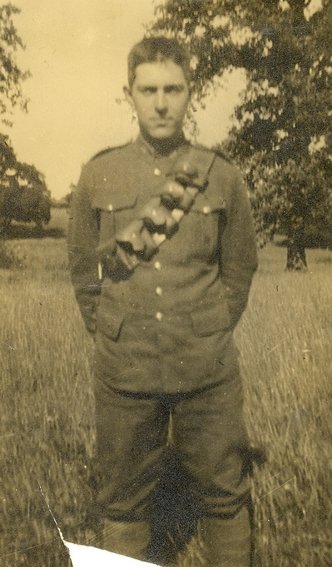Canadian Expeditionary Force

Kennedy served in France for nine months. His diary indicates that he was always happy to receive mail from home and also that he attended church services as often as possible. He fought at the Somme and upon his arrival at Vimy he was very impressed by the manpower and the artillery moving in to place in preparation for the big attack. In early April, 1917 Keltie writes of the challenges they faced as there was constant shelling, adverse weather conditions and damaged trenches requiring repairs. Keltie served with a Siege Battery. Their role was to fire heavy artillery rounds with the objective of destroying trenches, bunkers and barbed wire. On Easter Monday, April 9, Keltie was up and moving at 4:00 AM. He noted in his diary that by 7:25 AM there were large numbers of prisoners coming in and by 8:25 our troops were consolidating positions. He knew things were going well and that all of the advanced planning was paying off. After April 12, the Canadians still had a lot of work to do chasing out pockets of Germans. Shelling from the enemy was a constant threat. On April 15, Keltie was struck on his back by a piece of shrapnel and a rock hit his head. He avoided serious injury this time.
Keltie was wounded for the second time in Arleux, France by a high explosive shell on April 28, 1917. He was carried out under fire later that day. He sustained an injury to the bone in the left hip and also had a broken femur on his left leg. He became as noted in his medical records “dangerously ill” while in the hospital. The leg was seriously infected and as a result he was sent back to England. He was discharged in February, 1918 and was able to serve as a clerk. Sometime shortly after he married his wife Irene who had been his nurse during his convalescence in England. The leg again became troublesome and he was readmitted to the hospital in Bramshott in April, 1918 for further medical treatment. He was sent home in June, 1918 where again he was admitted to the hospital in July and discharged on August 20, 1918. The left leg was now one and a half inches shorter than his right leg.
Kennedy returned to Hampton, NB but in the aftermath of the Treaty of Versailles he felt certain that another global conflict was inevitable. These inter- war years were tough ones as there was not much money for the military but Kennedy felt that Canadians had to be ready when the next war started. The 8th Hussars were based in Hampton and Kennedy wanted to keep the regiment ready for the future. He convinced men to volunteer and keep training. He organized a machine gun troop in Hampton with the idea of keeping the men interested and developing their skills. From 1936 to 1939 he was the Lieutenant-Colonel of the 8th Hussars. Given the situation in Europe in the late 1930’s war was now imminent. It was under his leadership that the 8th Hussars converted from a mounted regiment to an armoured regiment. He was credited with ensuring the 8th Hussars were well prepared for service in the Second World War. During the Second World War, he served at District Headquarters and after the war he served again as Lieutenant-Governor of the Hussars. He would do so until 1948. Keltie was no doubt very proud of his son, Clifford who served in Italy and North west Europe during the Second World War.
Keltie Kennedy died in 1987 at the age of 88. He is celebrated among Hussars today as being the driving force which made the regiment such a formidable force during the Second World War.
